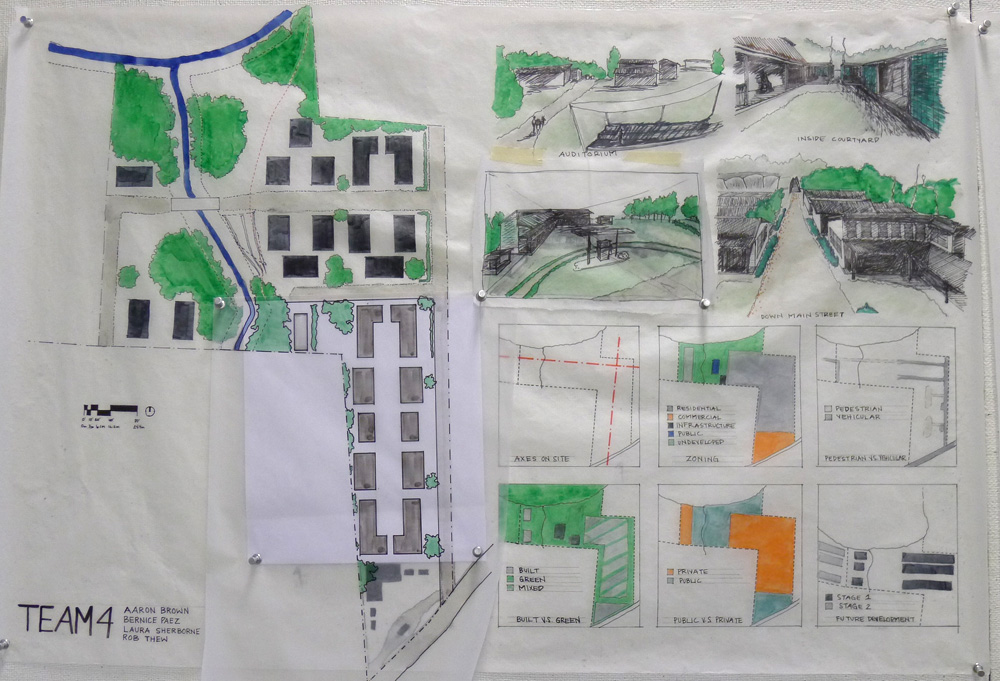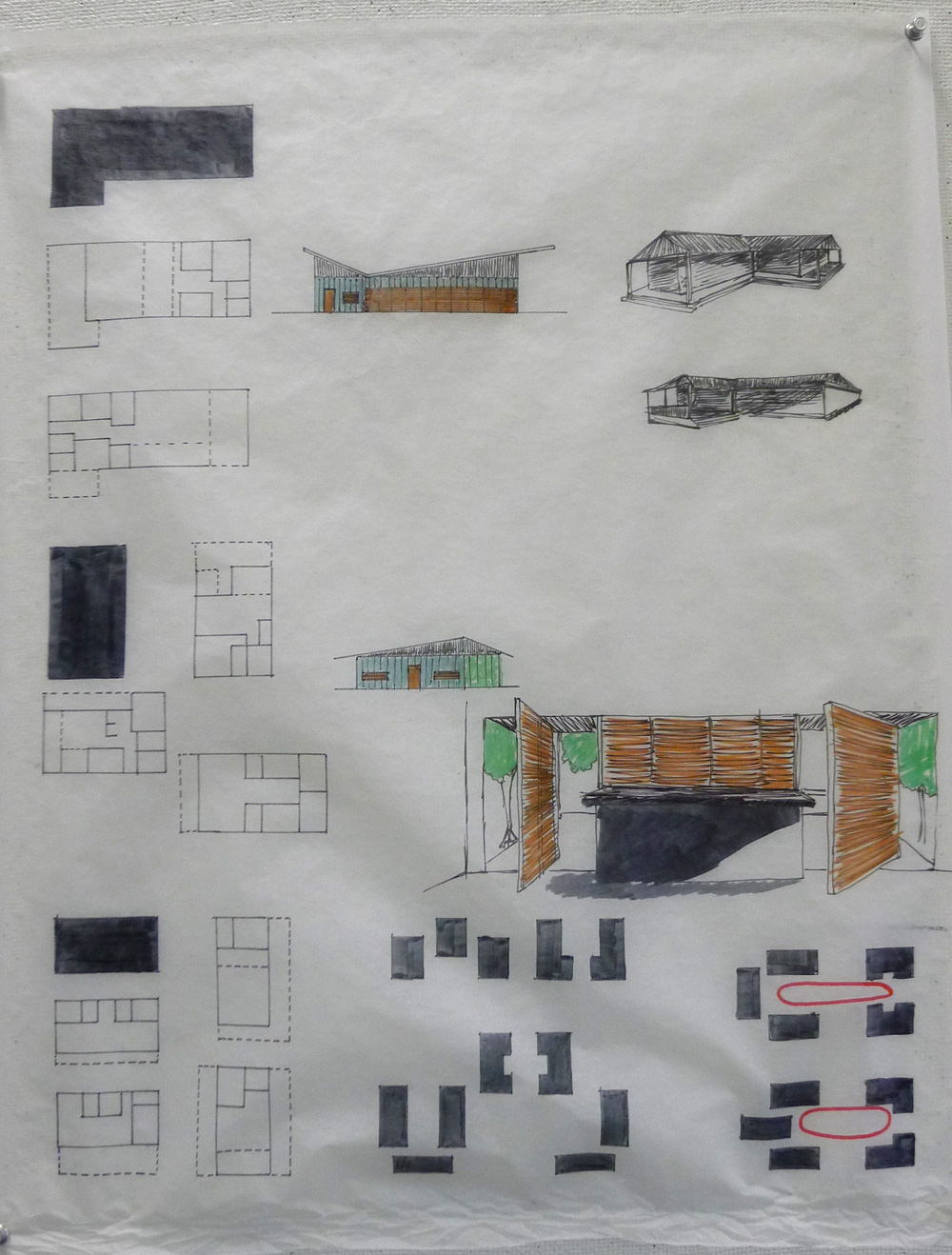Precedent to Proposal
 Wednesday, January 25, 2012 at 1:29PM
Wednesday, January 25, 2012 at 1:29PM ASSIGNMENT #1
RESEARCH AND PRECEDENT
Our team looked at the Winner of the Open Source Housing Competition, Emerging Ghana.
This was the work of the Portuguese architecture firm, Blaanc, together with Brazilian architect Joao Caiero. Their goal was to create a new kind of housing for the people of Ghana that will be scalable, affordable, sustainable and will offer amenities to the people of Ghana that they do not necessarily have access to at the present time.
Strategies were used to incorporate the traditional values of the people of Ghana, and some traditional building techniques, with a new and efficient infrastructure (solar water heater, modern toiletry, rainwater collection and filtering, etc.) Blaanc and Caiero used the very open facades to promote cross ventilation. The project also used operable woven bamboo shutters both to shield the house from direct sunlight and to continue to allow airflow through the space.
While working on this project, the team members were all struck by similarities between Emerging Ghana and the community we will be working on in Haiti this semester.
Sources:
http://www.facebook.com/opensourcehouse
http://www.archdaily.com/67279/winners-of-open-source-housing-competition/
DESIGN PROPOSAL
After evaluating the key principles of the Emerging Ghana project, whose site and conditions are very comparable to our site in Fond-des-Blancs, and speaking with our clients, Jean and Joy Thomas, our team was able to come up with key issues that we felt were must be addressed in order to form a design proposal.

As far as the site plan is concerned, we wanted the value for the exisiting natural environment to show through. We created roads that would give the people of the community direct access to their homes, yet did not cut the roads through much of the site, in order to promote pedestrian traffic. We also chose not to build houses near the river. We saw this area as sacred and wanted to keep the existing conditions as to not disturb the rituals the people of the town partake in in their everyday life. Another way of keeping the natural area pristine is by berming the infrastructure into the steep slope that leads to the river. This will hide the ghauty structure of such a necessity as well as must the sound it creates.

It was our vision to create a development that would hold a strong sense of community and focus on the interactions these people experience with each other on a daily basis. From these ideas, our team decided that the courtyard and porch elements of the the community would hold the highest priority in our design process. We came up with multiple schemes that would allow for an interactive courtyard area connecting pods of three houses. These houses would experience an intimate courtyard interaction as individuals to one another in the pod, as well as the interaction of one pod to another. The lower leg of the site has a slightly different language in that the courtyard areas of the pods become a larger mall-like area.

Another aspect that our group found extremely important was the ability to give the future residents of the community choices. Because there will be different sized families who will all have a different vision for their future home. We wanted the footprints of the homes seen in the site plan to remain the way they are so that the community offers diversity, however, we thought it was completely necessary to offer different plans for each footprint, so that the future residents would be able to choose the plan that fits their needs.

The last elements that should be mentioned for our design are the prospects of commercial space and future development. Our vision for the commercial area would consist of a main building that would house a convenient store as well as a small restaurant with a gas pump in front. This would be loctated at the very edge of the site at the main road. This location is ideal due to its visibility to the rest of the town and the ability for everyone in the community to utlize it.
Our vision for the future development of the community is that the pods would continue in the three pre-established bars on the other side of the river. These pods could possibly take new forms so as to keep the diversity of the community consistant, however, it is our intention that all future pods would keep the exisiting courtyard conditions we created with phase one.
Review from Robert Thew on Vimeo.
Here was the commentary we received while in Haiti.
 Aaron Brown,
Aaron Brown,  Bernice Paez,
Bernice Paez,  Laura Sherborne,
Laura Sherborne,  Rob Thew,
Rob Thew,  Team 4 in
Team 4 in  Aaron Brown,
Aaron Brown,  Bernice Paez,
Bernice Paez,  Laura Sherborne,
Laura Sherborne,  Rob Thew,
Rob Thew,  Team 4
Team 4 



